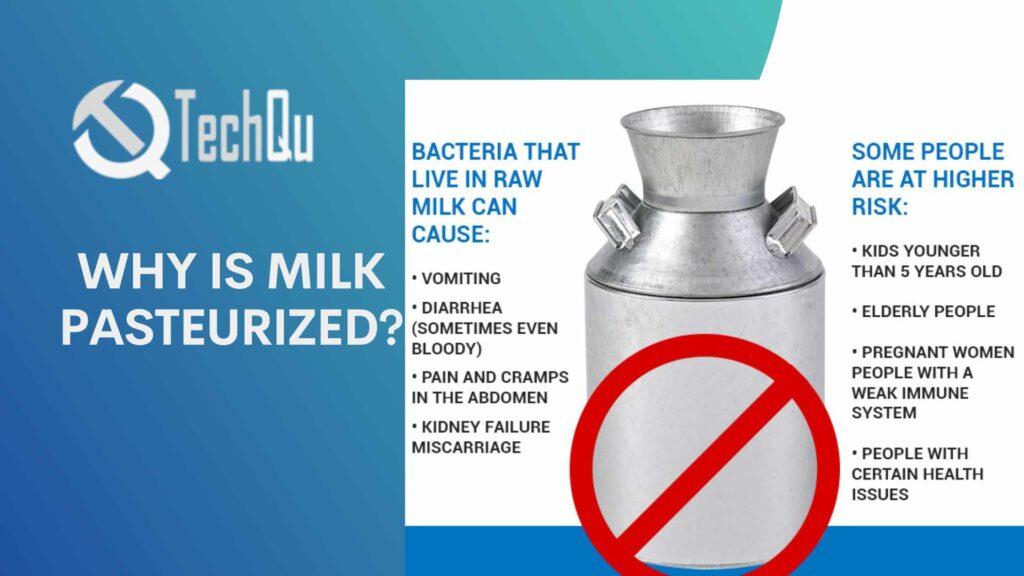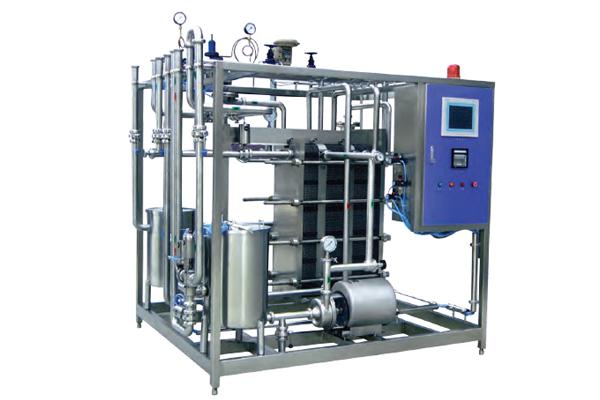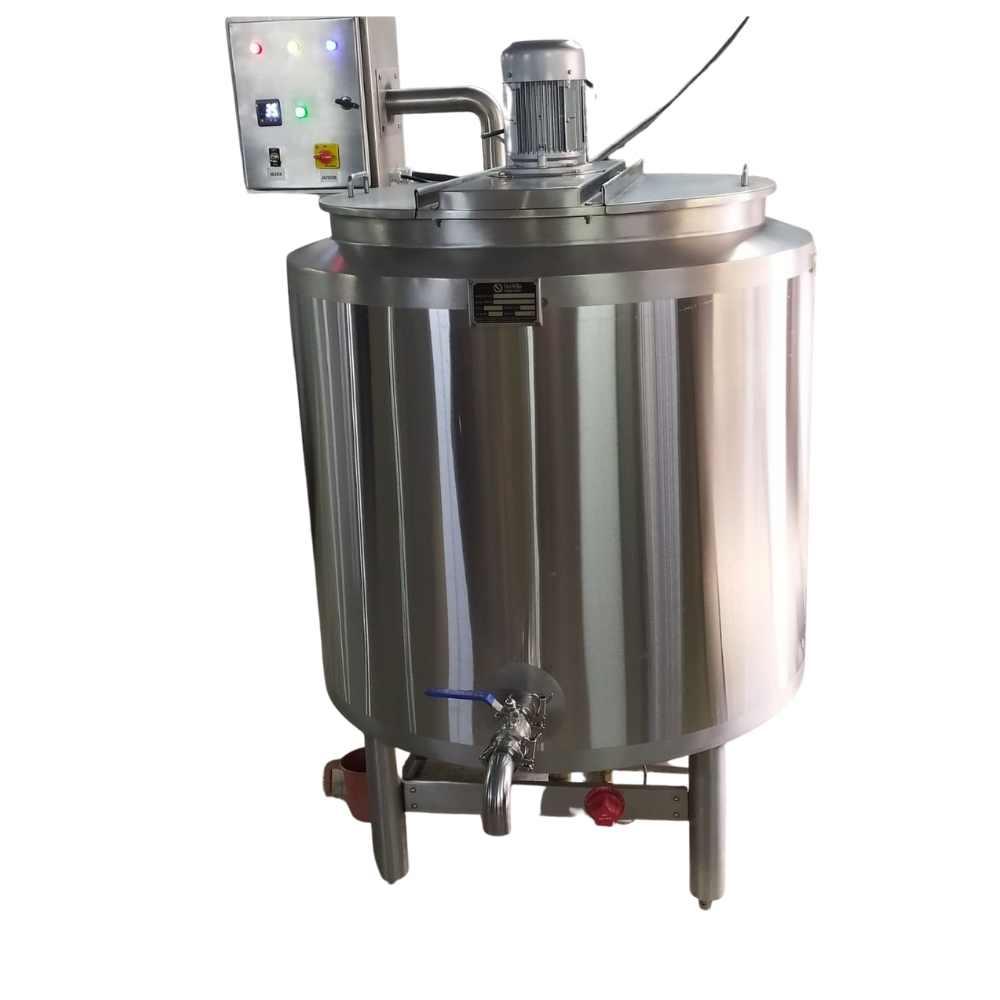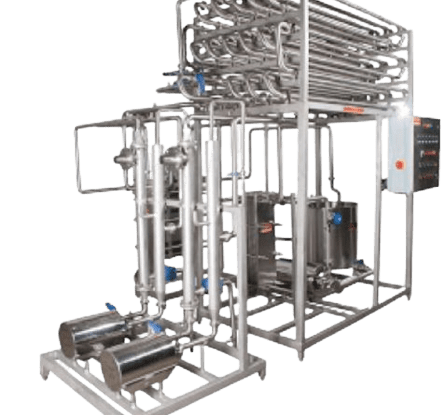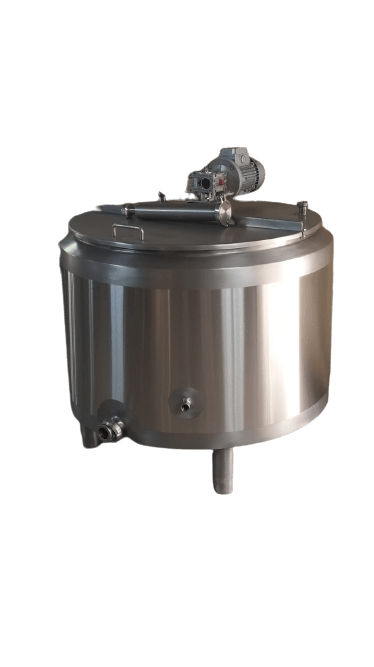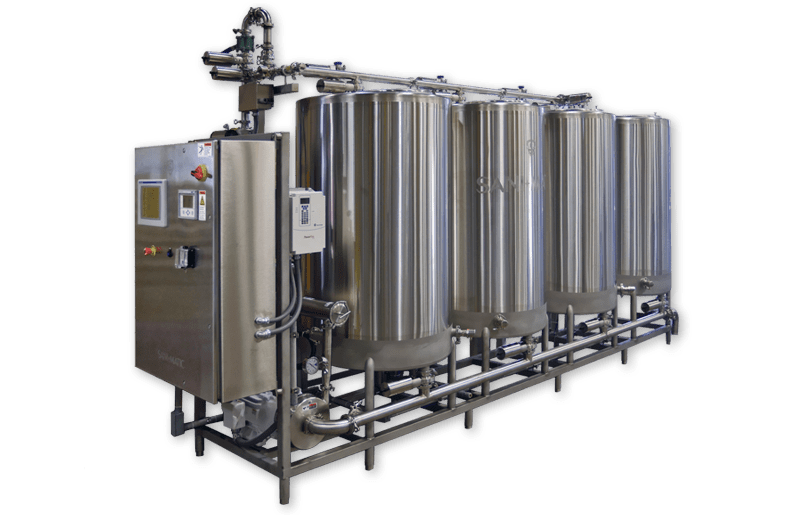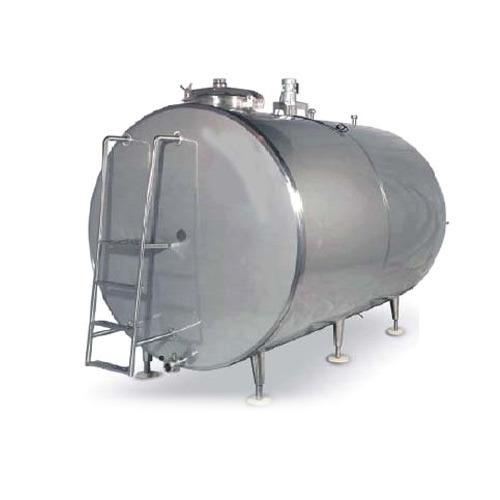Pasteurization Overview
Pasteurization is the process of heating milk to a high enough temperature for a long enough time to kill illness-causing germs. Pasteurized milk is milk that has gone through this process. The main objectives of pasteurization are as follows:
-
- To increase milk safety for the consumer by destroying disease causing microorganisms (pathogens) that may be present in milk.
- To increase keeping the quality of milk products by destroying spoilage microorganisms and enzymes that contribute to the reduced quality and shelf life of milk.
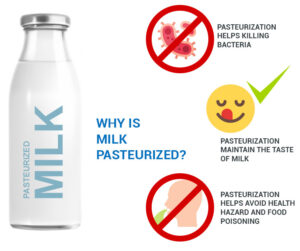
Pasteurization can also be defined as a simple heating and cooling process, which was discovered in the nineteenth century, that makes all milk safe to drink. There are a number of different ways to pasteurize milk—and each process depends on the length of time and the temperature milk is heated. Vat pasteurization, the original process, and standard during Pasteur’s time, heats milk for at least 30 minutes to 145° F. This is now largely used to create starter cultures for cheese, yogurt and buttermilk, as well as pasteurize some ice cream mixtures.
The most common process for pasteurized milk in the U.S. is High Temperature Short Time (HTST) pasteurization. It raises the temperature of cold raw milk to 161° F for at least 15 seconds. Then, it’s rapidly chilled back to 39° F, its original temperature.
Another form of pasteurization heats milk to 280° F for just two seconds. This is called Ultra Pasteurization (UT) and creates a shelf-stable container of milk that does not need to be refrigerated.
Ultimately, these different ways to pasteurize milk make all milk safe to drink, because each process works to kill potentially dangerous bacteria such as E.coli, salmonella and listeria. These microbes are responsible for causing numerous foodborne illnesses, according to the FDA.
There are two basic principles for heating – indirect and direct. Indirect heating uses a partition to separate the product from the heating (or cooling) medium, with the partition transferring the heat from the medium to the product, avoiding any direct contact between the two. Indirect heating is done with different kinds of heat exchangers, where the choice depends on different factors, such as the physical properties of the product, flow rate, run time and cleaning requirements.
-
- Plate heat exchangers (PHE) are mainly used for smooth, low viscous liquid products.
- Tubular heat exchangers (THE) can also handle products with particles up to a certain size and offer longer running times. The maximum size of particles depends on the diameter of the tube.
- Scraped-surface heat exchangers (SSHE) are specially designed for the heating and cooling of viscous, sticky and lumpy products, with or without particles.
Direct heating puts the product into direct contact with hot steam under strictly controlled conditions, rapidly reaching the target temperature. After holding for a certain time at the target temperature, the temperature is also lowered rapidly by flash cooling in a vacuum vessel. This rapid heating and cooling minimizes the heat-load, resulting in a high-quality product.
Milk is commonly pasteurized in plate heat exchangers at 72-75°C for 15 seconds. This temperature is sufficient to destroy all pathogenic bacteria, while significantly reducing the number of organisms that can cause spoilage. Performing an alkaline phosphatase test with a negative result will confirm that the milk has been adequately pasteurized so that it is safe for human consumption.
Raw milk is milk that has not been pasteurized to kill harmful bacteria. It can come from any animal. Raw milk can carry dangerous germs, such as Brucella, Campylobacter, Cryptosporidium, E. coli, Listeria, and Salmonella, which can pose serious health risks. Drinking raw (un-pasteurised) milk increases the risk of contracting serious illnesses. The sale of raw cow’s milk for human consumption is illegal.
Minimum pasteurization requirements for milk products are shown in Table below, and are based on regulations outlined in the Grade A Pasteurized Milk Ordinance (PMO). These conditions were determined to be the minimum processing conditions needed to kill Coxiella burnetii, the organism that causes Q fever in humans, which is the most heat resistant pathogen currently recognized in milk. Milk can be pasteurized using processing times and temperatures greater than the required minimums.
Pasteurization can be done as a batch or a continuous process. A vat pasteurizer consists of a temperature-controlled, closed vat. The milk is pumped into the vat, the milk is heated to the appropriate temperature and held at that temperature for the appropriate time and then cooled. The cooled milk is then pumped out of the vat to the rest of the processing line, for example to the bottling station or cheese vat. Batch pasteurization is still used in some smaller processing plants.
The most common process used for fluid milk is the continuous process. The milk is pumped from the raw milk silo to a holding tank that feeds into the continuous pasteurization system. The milk continuously flows from the tank through a series of thin plates that heat up the milk to the appropriate temperature. The milk flow system is set up to make sure that the milk stays at the pasteurization temperature for the appropriate time before it flows through the cooling area of the pasteurizer. The cooled milk then flows to the rest of the processing line, for example to the bottling station. There are several options for temperatures and times available for continuous processing of refrigerated fluid milk. Although processing conditions are defined for temperatures above 200°F, they are rarely used because they can impart an undesirable cooked flavor to milk.
Milk is a valuable nutritious food that has a short shelf-life and requires careful handling. Milk is highly perishable because it is an excellent medium for the growth of microorganisms – particularly bacterial pathogens – that can cause spoilage and diseases in consumers. Milk processing allows the preservation of milk for days, weeks or months and helps to reduce food-borne illness.
The usable life of milk can be extended for several days through techniques such as cooling (which is the factor most likely to influence the quality of raw milk) or fermentation. Pasteurization is a heat treatment process that extends the usable life of milk and reduces the numbers of possible pathogenic microorganisms to levels at which they do not represent a significant health hazard. Milk can be processed further to convert it into high-value, concentrated and easily transportable dairy products with long shelf-lives, such as butter, cheese and ghee.
Table. Pasteurization conditions used for milk products.
Pasteurization Type |
Typical Product |
Typical Storage |
Temperature |
Holding Time |
|---|---|---|---|---|
| Batch, vat | Milk |
Refrigerated
|
145°F (62.8°C)
|
30 min
|
|
“
|
Viscous products, or products with more than 10% fat or added sweetener |
“
|
150°F (65.6°C)
|
30 min
|
|
“
|
Egg nog, frozen dessert mixes |
“
|
155°F (68.3°C)
|
30 min
|
| Continuous, high temperature short time (HTST) | Milk |
“
|
161°F (71.7°C)
|
15 sec
|
|
“
|
Viscous products, or products with more than 10% fat or added sweetener |
“
|
166°F (74.4°C)
|
15 sec
|
|
“
|
Egg nog, frozen dessert mixes |
“
|
175°F (79.4°C)
|
25 sec
|
|
“
|
“
|
“
|
180°F (82.2°C)
|
15 sec
|
| Continuous, higher heat shorter time (HHST) | Milk |
“
|
191°F (88.3°C)
|
1 sec
|
|
“
|
“
|
“
|
194°F (90°C)
|
0.5 sec
|
|
“
|
“
|
“
|
201°F (93.8°C)
|
0.1 sec
|
|
“
|
“
|
“
|
204°F (96.2°C)
|
0.05 sec
|
|
“
|
“
|
“
|
212°F (100°C)
|
0.01 sec
|
| Continuous, Ultra pasteurization | Milk and cream |
Refrigerated, extended storage
|
280°F (137.8°C)
|
2 sec
|
| Aseptic, ultra high temperature (UHT) | Milk |
Room temperature
|
275-302°F (135-150°C) |
4-15 sec
|
| Sterilization | Canned products |
“
|
240°F (115.6°C)
|
20 min
|
Methods Used in Milk Pasteurization
1. High-Temperature Short Time (HTST) Pasteurization
This kind of pasteurization is also referred to by the name flash pasteurization. Flash pasteurization involves heating milk up to 71.7degC within 15 seconds in order to eliminate Coxiella burnetii. It is the most resistant pathogen to heat in raw milk. Because it is technically impossible to heat the milk to this exact temperature, it is safe to work within the range of temperatures. To ensure safety it is recommended to warm the milk between 72degC and 74degC over 15 to 20 minutes. It will guarantee that milk gets evenly heated at the correct temperature.
This method is best for continuously pasteurization equipment. Pasteurized milk that is flash pasteurized will last between 16 to 21 days. To meet commercial requirements certain manufacturers deliberately reduce the amount of time needed in order to take the products off of their shelves.
2. Low-Temperature Long Time (LTLT) pasteurization
In this case, the temperatures utilized for pasteurization are lowered to 63degC , and kept until 30 mins. The longer time of holding alters the structure and structure of milk proteins, making them more suitable for the production of yogurt.
This is the best method for batch pasteurization, where the milk is kept in a jacketed vessel for an efficient pasteurization. There are a variety of designs for batch pasteurizers on the market that can be used for commercial and residential usage.
3. Ultra-High Temperature (UHT) Pasteurization
It is a completely closed pasteurization technique. The product is not exposed for even less than a minute throughout all the process. It involves heating cream or milk up to temperatures ranging from 135degC to 150degC for a period of one to two seconds, and then cooling immediately before packaging it in an hermetic (air-tight) container to be stored. Despite the possibility that comes with Millard the browning process, UHT is still the most well-known method for preserving milk to ensure stable and safe milk.
4. Ultra Pasteurized
Not to be mistaken for UHT, Ultra Pasteurized (UP) milk is heated with industrially-grade sterile equipment, however, it isn’t considered to be as sterile since it isn’t hermetically sealed. The milk is heated up to 280 degrees Fahrenheit (138 degrees Celsius) for minimum two seconds, after which it is rapidly cooled down. Because the milk isn’t completely sealed off, it needs to be refrigerated, with an average shelf-life of 30 to 90 days.
Explore
Related Products

